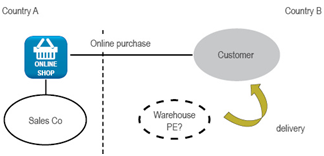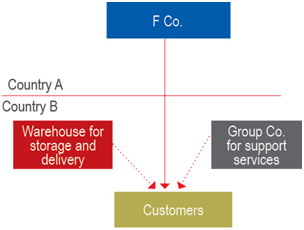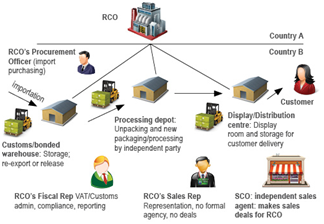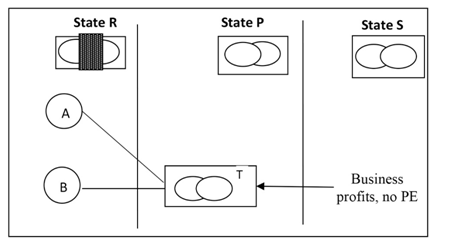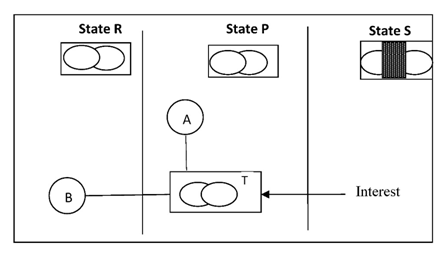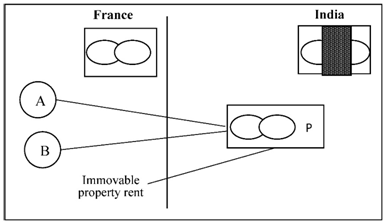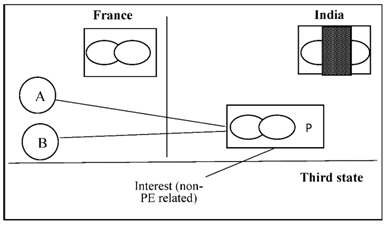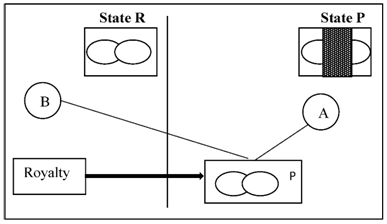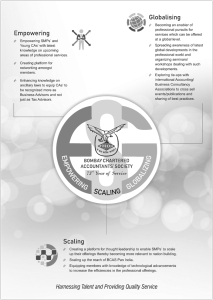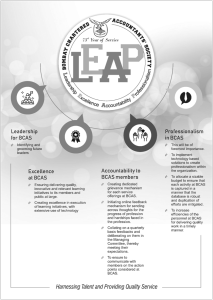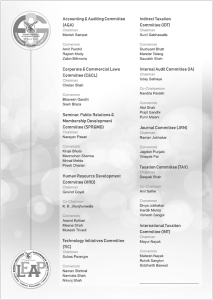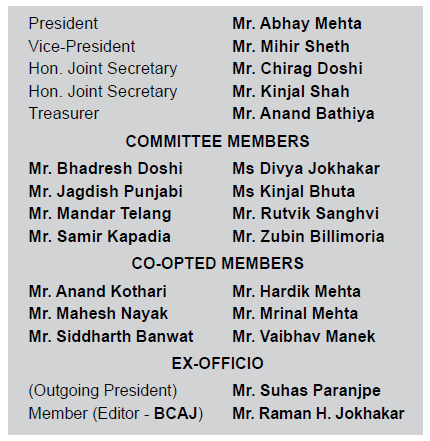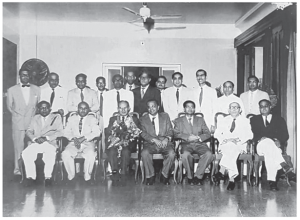While analysing the GST implications on a Government project, the first step is to understand the nature of the project. Let us see this with the help of a standard project under the BOT model where the infrastructure company enters into a ‘concession agreement’ with the Government / designated agency. Generally, the agreements are worded in such a manner as to state that the Government / designated agency has agreed to ‘grant a concession’ to the concessionaire, i.e., the infrastructure company, for which the latter has to pay a nominal consideration (generally, Rs. 1). In such cases, it is apparent that it is the infrastructure company which receives the supply and the Government / designated agency which actually makes the supply. While the tax implications would be immaterial in view of the nominal consideration, the legal issues could be identified as under:
• Whether the supply by Government / designated agency would qualify as supply of goods or services?
While an intangible property is treated as goods, in view of the decision in the case of Tata Consultancy Services vs. State of AP [2004 (178) ELT 22 (SC)], it needs to satisfy the tests of utility, capability of being bought and sold and, lastly, capability of being transmitted, transferred, delivered, stored, possessed, etc. While undoubtedly in the current case the rights would have been granted to the concessionaire, such rights would be lacking the characteristics referred to in the TCS case. In such a situation, it would be more appropriate to treat the rights granted as service rather than goods.
• If supply of services, whether the recipient would be liable to pay GST under RCM?
Once it is concluded that the supply is that of service and the service provider is the Government / designated agency, the provisions of reverse charge would get triggered and there would be a liability to pay GST under reverse charge mechanism. Of course, the recipient can claim exemption if the value of service does not exceed Rs. 5,000 as provided for vide Entry 9 of Notification No. 12/2017-CT (Rate) dated 28th June, 2017.
GST implications on core revenue
Let us now discuss the GST implications on the core revenue, i.e., usage charges collected by the concessionaire. Under the BOT model, there are different ways in which the concessionaire receives the said revenue, namely:
• Standard Model – Collection of usage charges,
• Annuity Model – Periodic payment from the Government / designated agencies,
• Hybrid Model – Collection of usage charges plus periodic annuity payment from the Government / designated agencies.
The tax implication on the first model is very simple as one merely needs to analyse the tax implications on the collection charges, which may vary depending on the nature of the collection charges. For example,
• collection of usage charges in respect of access to road is exempted by Entry 23 of Notification No. 12/2017-CT (Rate);
• services provided by way of transportation of passengers through rail (other than first class / an air-conditioned coach), including metro rails, is exempted vide Entry 17;
• services provided by way of transportation of passengers through rail by way of first class / an air-conditioned coach is liable to GST @ 5%;
• services of transportation of goods by rail is liable to GST @ 12% except in case where Indian Railways itself undertakes the transportation, in which case the same is liable to GST @ 5%;
• in case of ports (air / sea), there is no exemption and therefore charges collected from such users are liable to GST @ 18%.
The controversy revolves around the annuity model for roads. An annuity is a periodic payment made by the Government / designated agency to the concessionaire. Under this model, the collection of toll / usage charges is undertaken by the Government / designated agency and the concessionaire has no role to play in the same. There is a controversy around taxability of such annuity payments. This is because in case of such agreements the transaction structure takes a shift and even the concessionaire becomes a service provider, to the extent that he has constructed the infrastructure for which he has received the annuity payments from the Government / designated agencies. In that context, the annuity payments become liable to GST @ 12%. This has also been clarified by the recent CBIC Circular 150/06/2021-GST dated 7th June, 2021 wherein the Board has clarified that the said exemption will not apply to annuity paid for construction of roads. However, the said Circular apparently makes Entry 23A of Notification No. 12/2017-CT (Rate) which exempts service by way of access to a road or a bridge on payment of annuity, irrelevant. The said exemption Entry was introduced after discussions at the GST Council meeting held on 13th October, 2017 which read as under:
‘Agenda item 13(iv): Issue of Annuity being given in Place of Toll Charges to Developers of Public Infrastructure – exemption thereon
61. Introducing this Agenda item, the Joint Secretary (TRU-II), C.B.E. & C. stated that while toll is a payment made by the users of road to concessionaires for usage of roads, annuity is an amount paid by the National Highways Authority of India (NHAI) to concessionaires for construction of roads in order that the concessionaire did not charge toll for access to a road or a bridge. In other words, annuity is a consideration for the service provided by concessionaires to NHAI. He stated that construction of roads was now subject to tax at the rate of 12% and due to this, there was free flow of input tax credit from EPC (Engineering, Procurement and Construction) contractor to the concessionaires and thereafter to NHAI. He stated that as a result, tax at the rate of 12% leviable on the service of road construction provided by concessionaire to NHAI would be paid partly from the input tax credit available with them. He stated that the Council may take a view for grant of exemption to annuity paid by NHAI / State Highways Construction Authority to concessionaires during construction of roads. He added that access to a road or bridge on payment of toll was already exempt from tax. The Hon’ble Minister from Haryana suggested to also cover under this provision annuity paid by State-owned Corporations. After discussion, the Council decided to treat annuity at par with toll and to exempt from tax, service by way of access to a road or bridge on payment of annuity.’
Interestingly, before the above clarification from the CBIC, the issue was dealt with by the AAAR in the case of Nagaur Mukundgarh Highways Private Limited [2019 (23) GSTL 214 (AAAR-GST)]. In this case, the AAAR held that annuity paid during the construction phase would be liable to GST under SAC 9954, while annuity paid during the O&M phase would be exempted under SAC 9967. However, the said ruling seems to be on a weak footing mainly because there is nothing in the concession agreements which states that the annuity paid post completion of work is towards the O&M phase only and not towards the construction activity. Therefore, appropriating annuity paid during the O&M phase towards the toll charges seems to be improper.
A proper clarification on this issue would certainly be forthcoming since the amounts mentioned in such contracts are generally inclusive of GST and if ultimately it is held that GST is indeed payable on the annuity component, the entire financials for the project would be impacted since it would have a 12% GST impact, of course with corresponding benefit. But it should be kept in mind that in case of long-term projects, if a position has been initially taken that the annuity was not liable for GST, corresponding ITC would not have been taken and the same would now be time-barred. Therefore, the GST credit may be available only prospectively and the benefit may not be substantial to that effect.
INPUT TAX CREDIT IMPLICATIONS
This now takes us to the next aspect of ITC. To understand the ITC-related implications, it may be important to put down the chronology of events:
• The concessionaire receives services from the Government / designated agency;
• The concessionaire undertakes the development of infrastructure activity, which entails paying GST on various inward supplies;
• The revenue is earned by collecting usage charges from the users.
It is imperative to note that in most of the cases, the infrastructure so developed is an immovable property, such as roads, airports, seaports, metro rail, etc. Therefore, the issue remains whether ITC can at all be claimed in view of section 17(5)(c)/(d) of the CGST Act, 2017 which restricts claim of ITC on account of goods or services (including works contract services) received for construction of an immovable property on own account. Of course, the said restriction applies only if the cost incurred towards the same is capitalised in the books of accounts.
This opens up an important dimension from the accounting perspective. It should be noted that the concessionaire is not the owner of the infrastructure project and therefore the amounts are not capitalised in the books of accounts as Fixed Assets, but rather treated as intangible asset / Financial Asset, which is amortised over a period of time as per the guidelines laid down by the relevant Ind AS. If one takes an aggressive view, the restriction u/s 17(5) may be circumvented and make such concessionaire eligible for ITC.
Secondly, in the case of Safari Retreats Private Limited vs. CC of GST [2019 (25) GSTL 341 (Ori)], the provisions of section 17(5)(d) have been ultra vires the provisions of the object of the Act and it has been held that ITC should be allowed on receipt of goods or services used in the construction of an immovable property which is used for providing an output service. However, it needs to be kept in mind that the Revenue appeal against this order is currently pending before the Supreme Court.
The above discussion would be relevant only in case of projects for airport / seaport where the usage charges to be collected from the users are taxable. However, in case of road projects / metro rail projects there is an exemption from tax on collection of charges and, therefore, even otherwise the claim of credit would be hit by section 17(2) of the CGST Act, 2017 and therefore ITC may not be eligible.
GST IMPLICATIONS ON OTHER GOVERNMENT PROJECTS
In case of projects not under the PPP model, where the contract is given to the infrastructure company for a fixed consideration, the GST implications would be of a different level. This is because Entry 3 of Notification No. 11/2017-CT (Rate) prescribes a lower effective GST rate of 5% / 12% on specific services. However, the said concession is subject to satisfaction of conditions such as:
To whom have the services been supplied?
The entries require that the service should be provided either to the Central Government, State Government, Union Territory, Local Authority, Government Authority or Government Entity.
What constitutes Government Authority / Government Entity has been defined in the Notification itself as under:
|
Government
Authority
|
Government
Entity
|
|
[(ix) ‘Governmental Authority’ means an
authority or a board or any other body, –
(i) set up by an Act of Parliament or a
State Legislature; or
(ii) established by any Government,
with 90% or more participation by way of
equity or control, to carry out any function entrusted to a Municipality
under Article 243W of the Constitution or to a Panchayat under Article 243G
of the Constitution
|
(x) ‘Government Entity’ means an authority
or a board or any other body including a society, trust, corporation,
(i) set up by an Act of Parliament or State
Legislature; or
(ii) established by any Government,
with 90% or more participation by way of
equity or control, to carry out a function entrusted by the Central
Government, State Government, Union Territory or a Local Authority.]
|
From the above, it is apparent that the only distinction between Government Authority and Government Entity is that the former carries out functions entrusted to any Municipality under Article 243W or a Panchayat under Article 243G, while the later carries out any function entrusted to it by the Government.
Nature of service
The next aspect that needs to be looked into is the nature of supply being made. Clauses (iii) and (vi) provide that composite supply of works contract supplied to Central Government, State Government, Union Territory, a Local Authority, a Governmental Authority or a Government Entity by way of construction, erection, commissioning, installation, completion, fitting out, repair, maintenance, renovation, or alteration of, should be considered as eligible for the lower tax rate.
The above highlighted portion is relevant. It requires that the supply should be a composite supply of works contract. This indicates that the supply has to be in relation to an immovable property, owing to the fact that the definition of the term ‘works contract’ applies specifically to immovable property under GST. This aspect was recently dealt with by the AAR in the case of Nexustar Lighting Project Private Limited [2021 (47) GSTL 272] wherein the Authority held that a contract for installation of streetlights did not qualify as a works contract and therefore benefit of lower tax rate was not available.
Service in relation to
The next aspect that needs analysis is whether or not the services are provided in relation to the following:
Under Entry 3 (iii)
(a) a historical monument, archaeological site or remains of national importance, archaeological excavation, or antiquity specified under the Ancient Monuments and Archaeological Sites and Remains Act, 1958 (24 of 1958);
(b) canal, dam or other irrigation works;
(c) pipeline, conduit or plant for (i) water supply, (ii) water treatment, or (iii) sewerage treatment or disposal.
Under Entry 3 (vi)
(a) a civil structure or any other original works meant predominantly for use other than for commerce, industry, or any other business or profession;
(b) a structure meant predominantly for use as (i) an educational, (ii) a clinical, or (iii) an art or cultural establishment; or
(c) a residential complex predominantly meant for self-use or the use of their employees or other persons specified in paragraph 3 of the Schedule-III of the Central Goods and Services Tax Act, 2017.
[Explanation. – For the purposes of this item, the term ‘business’ shall not include any activity or transaction undertaken by the Central Government, a State Government or any Local Authority in which they are engaged as public authorities.]
Under Entry 3 (vii):
Composite supply of works contract involving predominantly earth work, that is constituting 75% of the value of works contract.
Care should be taken specifically while dealing with Entry 3 (vi)(a) where the interpretation of the phrase ‘for use other than for commerce, industry, or any other business or profession’ has created substantial confusion. For example, in the context of works contract services provided in relation to electricity generation plants, the AAR has on multiple occasions held that the activities carried out by electricity generating / distribution companies cannot be treated as ‘for use other than for commerce, industry, or any other business or profession’. One may refer to the recent decisions of the AAAR in the cases of R.S. Development & Constructions Private Limited [2021 (48) GSTL 162 (AAAR – Kar)], Manipal Energy & Infratech Private Limited [2020 (40) GSLT 237 (AAAR – Kar)], etc.
Entry (vii) provides for levy of GST @ 5%. However, the condition is that the service involved should be a composite supply of works contract involving predominantly earth work that is constituting 75% of the value of the works contract. While the term ‘earth work’ has not been defined under the GST law, the same was analysed by the AAAR in the case of Soma Mohite Joint Venture [2020 (041) GSTL 0667 (AAAR – GST – Mah)] wherein the Appellate Authority held that earth work includes both excavation and fortification. Therefore, so long as earth work constitutes more than 75% of the value of a works contract, the benefit of a lower tax rate should be available. However, for such benefit care should be taken to ensure that the contract specifically mentions the consideration for such activity separately. If the break-up is not available, the benefit of the lower rate may be denied.
Common condition
A common condition for Entries (iii) and (vi) when the services are provided to a Government Entity is that the said Government Entity should have procured the said services in relation to a work entrusted to it by the Central Government, State Government, Union Territory or Local Authority, as the case may be.
In Shri Hari Engineers & Contractors [2020 (38) GSTL 396 (AAR – GST – Guj)], the AAR had denied the benefit of lower tax rate for the reason that the Railtel Corporation of India Limited, which had issued the contract, was not entrusted to carry out the said activity by the Central Government / State Government / Union Territory or Local Authority.
Therefore, while concluding classification under Entry 3 (iii) or Entry 3 (vi), fulfilment of this condition should be looked into and documentary evidence to support the same should be obtained.
Extension of benefit to sub-contractors
Vide Entries 3 (ix) and 3 (x), the benefit of lower tax rate is also extended to sub-contractors who make composite supply of works contract to the main contractor. However, it is imperative to note that this benefit applies only for works contract services and not stand-alone services and the same would be liable to GST @ 18%.
Exemption
In addition to lower effective tax rate, certain services supplied to Government have been exempted vide Notification No. 12/2017-CT (Rate). The same is tabulated in the following Table:
|
Entry
|
Nature
of supply
|
Supply
relating to
|
Service
provided to
|
|
3
|
Pure services (excluding works contract
services or other composite supplies involving supply of any goods)
|
Any activity in relation to a function
entrusted to a Panchayat under Article 243G / to a Municipality under
Article 243W of the Constitution
|
Central Government, State Government, Union
Territory, Local Authority, a Governmental Authority or a Government Entity
|
|
3A
|
Composite supply of goods or services
(goods not being more than 25% of the value of the composite supply)
|
Any activity in relation to a function
entrusted to a Panchayat under Article 243G / to a Municipality under
Article 243W of the Constitution
|
Central Government, State Government, Union
Territory, Local Authority, a Governmental Authority or a Government Entity
|
What constitutes ‘pure services’ has not been defined under GST. However, by nomenclature, it seems that supply which does not have any element of supply of goods involved in it would be treated as pure service, for example, consultancy service. This view finds support from the decision of the AAR in the case of R.R. Enterprises [2021 (47) GSTL 309 (AAR – GST – Har)] wherein the Authority held that since only manpower supply services were to be provided by the applicant and since no supply of goods is involved, such services qualify as pure services.
The important aspect which needs to be looked into while dealing with exemption entries is that the services provided should be in relation to a function which has been entrusted to a Municipality under Article 243W or Panchayat under Article 243G. However, the service need not be provided directly to the Municipality or Panchayat. It may be provided to the Central Government / State Government / Government Authority / Government Entity.
The only caveat is that the service should be provided in relation to an activity specified in Article 243W / Article 243G. Whether a particular activity is covered under Article 243G / 243W or not has been dealt with by the AAR on multiple occasions.
In the case of Lokenath Builders [2021 (46) GSTL 205 (AAR – GST – WB)], it was held that waste disposal services by engaging garbage-lifting vehicles and other cleaning equipment without any supply of goods would be a pure service and an activity covered under Entry 6 of the 12th Schedule and therefore eligible for exemption.
In MSV International Inc. [2021 (49) GSTL 171 (AAR – GST – Har)], while the Authority held that the services provided in relation to construction of State / district highways was a pure service, the same would still not be eligible for exemption benefit since the construction of State / district highways was not an activity entrusted to a Municipality under Article 243W / Panchayat under Article 243G of the Constitution.
Similarly, the exemption benefit was denied by the AAR for services provided to National Institute of Technology, an institute of higher education, which was not covered under Article 243W / 243G of the Constitution. (Refer National Institute of Technology [2021 (47) GSTL 314 (AAR – GST – Har)].
In Janaki Suhshikshit Berojgar Nagrik Seva Sansthan Amravati [2021 (46) GSTL 277 (AAR – GST – MH)], the AAR denied the benefit of exemption to service of supply of manpower to Government Medical College. The conclusion of the Authority was that supply of manpower was not covered under either the 11th or the 12th Schedule.
In the view of the authors, the above ruling does not represent the correct position of law. Entry 6 of the 12th Schedule, public health, is the responsibility of the Municipality and therefore it is bound to make necessary arrangements to deliver the same to the citizens. Any service provided by a vendor towards the said activity can therefore be said to be in relation to a function entrusted to the Municipality under Article 243W of the Constitution and therefore eligible for exemption.
There are some other examples of service which can also be eligible for the exemption, such as:
• advertisements placed in the newspapers creating awareness by the Municipal Corporation would be eligible for exemption since activities in relation to public health awareness are among the activities entrusted to the Municipality under Article 243W;
• services provided in relation to collection of parking charges on behalf of the Municipality are covered under Entry 17 of the 12th Schedule of the Constitution and therefore should be eligible for exemption.
The above discussion clearly brings out the need to analyse the tax position of any project at the tendering stage itself. This is because in case of Government projects usually the contract value is treated as inclusive of GST and the contractor has to bill accordingly. If during the tendering process the company bids assuming eligibility for exemption / lower GST rate and ultimately it turns out that the supply was taxable at the normal rate, the implications would be catastrophic.
ARBITRATION CLAIMS
An important part of Government projects (which is also present in private transactions) are the arbitration clauses in the agreements. At times, due to contractual disputes, the parties to a contract may opt for arbitration and reconciliation and there can be flow of money (both ways) depending on the outcome of the project.
While determining taxability of arbitration claims, a detailed reading of the arbitration award is very relevant. For example, in the case of BOT arrangements discussed above, there is a clause for payment of grant to the concessionaire. If there is a delay in payment of grants, the concessionaire may seek compensation and can go for arbitration on the said issue. If the arbitration award is on account of such a dispute, it may not be taxable since the grant itself was not taxable in the first place.
However, if the arbitration award is for a contractual dispute, for example, the contractor lodges a claim of Rs. 2 crores on the client for work done, while the client approves the claim only to the extent of Rs. 1.75 crores – in such cases, the contractor has an option to resort to arbitration for the disputed amount and if the arbitration is in his favour, he would be entitled to receive the differential amount along with costs as may be granted by the arbitration award. In such a case, a more appropriate position would be to say that the differential amount received is towards a supply and therefore liable to GST.
Arbitration claims – rollover from pre-GST regime
In the case of arbitration awards, it has to be kept in mind that the outcome period of the dispute under arbitration is very long. It is possible that arbitration claims for work done during the pre-GST regime get concluded under the GST regime. This will lead to substantial challenges for the contractors for the following reasons, especially in cases where the dispute is on account of quantification of work done:
• Under the pre-GST regime, services to Government were exempted or were taxable at a substantially lower rate (post abatement). Similarly, even under the VAT regime, the applicable tax rate for works contract was on the lower side, say 5% / 8%.
• The work for the said service would have been completed under the pre-GST regime. However, it is seen that the tax on the said amount is not discharged as the claim is not approved by the client and it has been an industry practice to pay tax on such amounts only when the matter reaches finality.
• The issue that arises is whether the tax on such arbitration awards would be payable under the pre-GST laws, i.e., VAT / Service tax, or as per the provisions of the CGST / SGST Acts? The answer to this question would be relevant since under the pre-GST regime the effective tax rate would have been lower as compared to the effective GST rate which is 12% for supplies to Government.
To deal with the above situation, let us refer to section 142(11) of the CGST Act, 2017 which provides that to the extent tax was leviable under the erstwhile VAT Acts or under Chapter V of the Finance Act, 1994, no tax would be leviable under the CGST Act, 2017. It is imperative to note that in case of such roll-over arbitration disputes, the work is already completed before the claim is lodged. It is mere quantification of the work which takes place upon resolution of the dispute and, therefore, it can be said that the tax was actually leviable under the VAT Acts / Finance Act, 1994 itself when the activity was actually carried out and hence a view can be taken that no GST is leviable on such arbitration awards.
Arbitration claims – in the nature of liquidated damages
The next point of discussion would be arbitration claims where the award is in the nature of liquidated damages. Liquidated damages are dealt with under the Indian Contract Act, 1872 within sections 73 and 74. Section 73 states that ‘when a contract has been broken, the aggrieved party is entitled to get compensation or any loss or damages which has been inflicted to him / her naturally during the usual course of breach of contract or about which the parties to the contract had prior knowledge when they entered the contract.’
Similarly, section 74 states that ‘when a contract has been broken, and if a sum is named in the contract as the amount to be paid for such breach, or if the contract contains any other stipulation by way of penalty, the party complaining of the breach is entitled, whether or not actual damage or loss is proved to have been caused thereby, to receive from the party who has broken the contract reasonable compensation not exceeding the amount so named or, as the case may be, the penalty stipulated for’.
Therefore, when an arbitration award is on account of breach of contractual terms, which results in grant of damages to either party, the same would not constitute consideration under the Contract Law and therefore there cannot be any liability towards GST on the same.
TDS DEDUCTION & ASSOCIATED CHALLENGES
Section 51 of the CGST Act, 2017 obligates Government / designated agencies to deduct TDS on payments made for taxable supply of goods or services, or both, received by them.
Unfortunately, as a universal rule TDS is deducted on all payments, including on grants, arbitration awards, etc., without actually analysing whether or not the said payment is towards receipt of taxable supply of goods or services, or both. This results in difficulty for the concessionaire / contractor. This is because if they would have taken a position that they have not made any supply / the supply made by them is exempt, the TDS provisions would not have got triggered. If in such cases also TDS is deducted and if they accept the same, it is likely that the Department may challenge their claim stating that their clients themselves treat the supply as taxable supply, leaving such concessionaires / contractors in a Catch-22 situation.
Of late, it has also been seen that the tax authorities have been issuing notices based on mismatch between the credits reported in GSTR7 by the tax deductors vis-a-vis the liability reported by the contractors. It is imperative to note that there will generally be a time gap between disclosure of liability by the supplier and deduction of tax by the deductor. This is because the supplier would pay the tax when he issues the invoice to the deductor-client. However, such invoice goes through the approval
process which generally consumes time and before the invoice is accounted by the deductor-client and TDS is deducted.
It is therefore advisable that before any TDS credit is claimed, the same be reconciled with the month in which the corresponding liability was discharged and, preferably, if the client has deducted TDS in advance (on provisional basis), such credit should be kept deferred and claimed only when the actual invoice is issued by the contractor and the corresponding liability discharged.
CONCLUSION
The general perception in the industry is that doing business with the Government is a profitable venture. But there are many complications and confusions which make such businesses quite risky. It is always advisable for taxpayers to be very careful while taking a position on a transaction with Government as the tax would generally have to be paid out of one’s own pocket, thus having a severe impact on the overall profitability of the venture.










